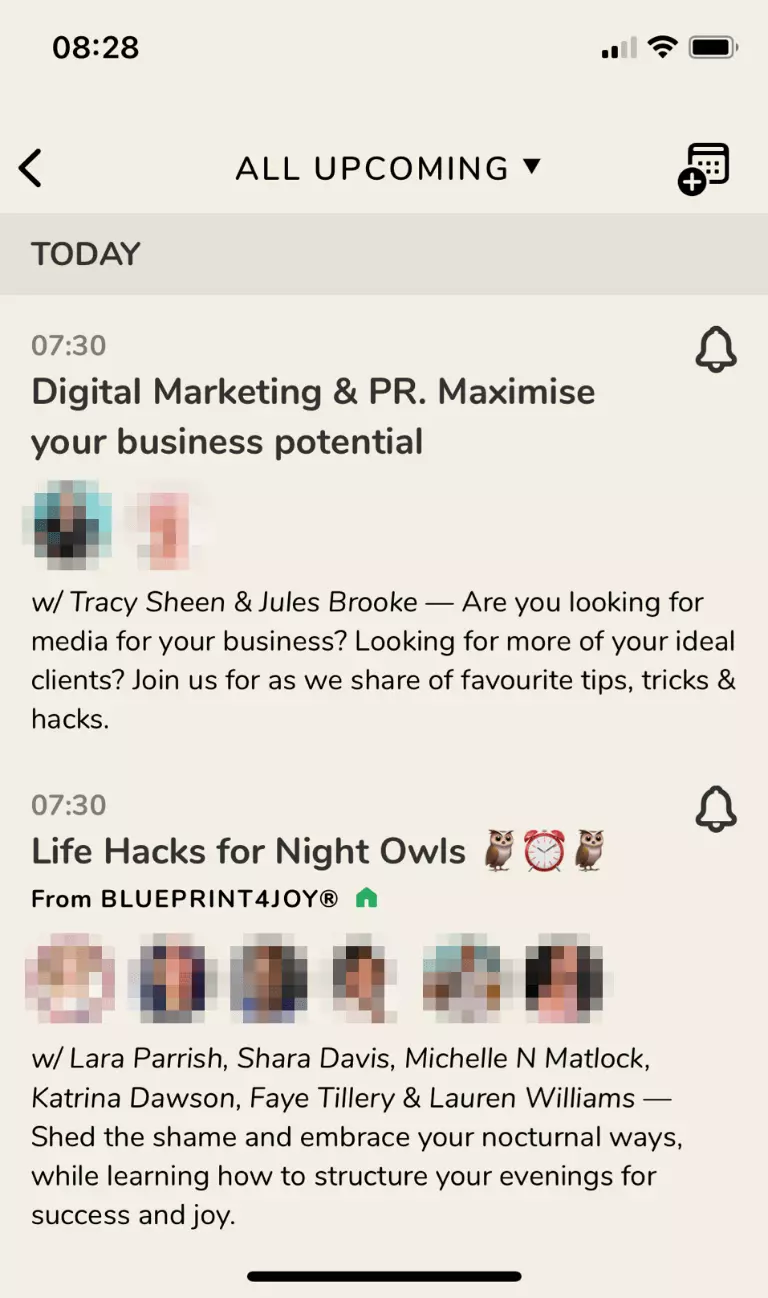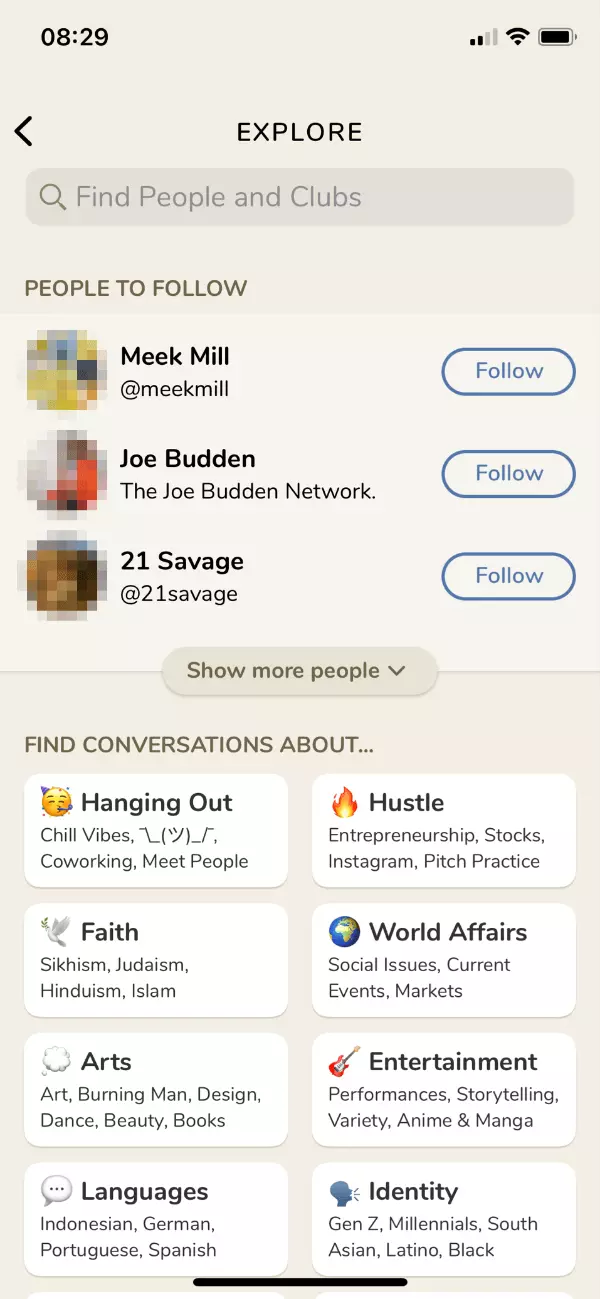Clubhouse app: what’s behind the hype?
A mixture of podcast and tele-conference: the new social network Clubhouse promises to make discussions on the Internet more productive again. This is supposed to work by people talking to each other - instead of just typing. With this innovative approach and a clever marketing concept, Clubhouse caused a sensation within a few weeks. We explain what’s really behind the smartphone app and why you need an invitation to participate.
What is Clubhouse?
Clubhouse is a free social network that users can access via a smartphone app. While text, images, and videos dominate on Facebook and Twitter, Clubhouse is intended as an audio-only app. Users speak to one another directly, instead of texting at different times. This avoids a lot of misunderstandings. The contents on Clubhouse range from interesting lectures, lively discussions, and business networking events.
The app was created by two Silicon Valley veterans: Paul Davison who gained much of his experience working for Pinterest, and Rohan Seth who previously worked for Google. Together they founded the company Alpha Exploration Co., which oversees the development of the app. The first version of the app was released in the Apple AppStore in spring 2020. While initially only IT insiders and investors were interested in Clubhouse, the app has become increasingly popular in the wake of the COVID-19 pandemic and social distancing measures.
- Free website builder with .co.uk
- Free website protection with one Wildcard SSL
- Free 2 GB email account
How does the Clubhouse app work?
The app has a fairly simple design. Its main components are individual chat rooms which can be opened by individual users to start chatting with other members. Other users can enter these rooms and listen in on conversations. If you want to take part in a discussion or ask a question, you raise your virtual hand. Moderators can react and activate the sound option to let others speak.
Users can take on one of three different roles in a Clubhouse room:
- ‘Speakers‘ engage in a discussion and can be heard by everyone.
- ‘Moderators‘ oversee who gets to speak and can nominate users to become moderators.
- ‘Listeners‘ follow a conversation while muted and have to raise a virtual hand in order to be permitted to speak.
Conversations happen synchronously (i.e., not delayed compared to other apps) on Clubhouse. This means that content is always produced in real-time and cannot be accessed afterward. There’s a calendar function so that users can avoid missing interesting talks. Discussion organisers can create talks that others can register for. In that way, the app is similar to Twitch – a platform that not only offers live streams for computer games, but also lets fans join conversations with streamers.
Clubhouse is a social network, which means that users can add friends. Depending on the interests of your contacts, the app shows suggestions for rooms on the homepage. The idea is that friends share similar interests. Like Facebook and other social media solutions an algorithm runs in the background on Clubhouse to personalise event suggestions. As you define your own areas of interest, the suggestions on the homepage will change to include topics you’re interested in.
Currently (January 2021), Clubhouse is only available for iOS devices. However, the developer plans to release an Android version soon.
What’s with the Clubhouse hype?
The Clubhouse app initially was not well-known – at least in terms of user numbers. Despite the lack of members, the founders were able to attract large investments early on. That guaranteed its speedy technical development and produced a very successful marketing strategy.
How did the app become so popular? For one, celebrities were attracted to the platform. For example, Oprah Winfrey and rapper Drake are registered with Clubhouse as are MC Hammer, Estelle, Tiffany Haddish, Kevin Hart, Jared Leto, Meek Mill, Aston Kutcher, and many other Silicone Valley entrepreneurs. In Germany, for example, even high-ranking politicians have signed up to the new social network. This created a pull effect which is being deliberately slowed down.
Its developers (at least initially) relied on artificial scarcity: to become a member of Clubhouse, you have to be invited by another user. Every new member only gets to hand out two invitations. Only when you get involved on the platform, can you help other friends to join as members.
The hype surrounding the Clubhouse app comes down to FOMO: Fear of missing out. The fear of missing out on an important development and not being an early adopter generates increased interest in the social network. At the same time, the slow growth ensures that servers and employees of Alpha Exploration Co. are not overloaded in one fell swoop. After all, the app is still in beta.
While some people can hardly wait to join the new network, others feel the opposite: JOMO – Joy of missing out describes the state of being happy to not be involved in something.
How can you get a Clubhouse invite?
Want to become part of Clubhouse? Then you need an invitation - or you can join a waiting list. An entry in the list ensures that you can save your desired username. Then you have to hope that a friend (who has you saved as a contact in their smartphone) is already registered with Clubhouse and approves the application. The user does not have to use one of their two invitations for this.
Joining can be faster of course – if someone invites you directly. However, since each user initially can only give out two invitations, the probability of being one of the chosen ones is relatively low.
Other users are already trying to make a profit from the system: resourceful users, especially on eBay, are selling Clubhouse invitations for more than $100 (£75) in some cases.
- Professional templates
- One-click design changes
- Free domain, SSL and email
Criticism of Clubhouse
While Clubhouse has broken records and is becoming increasingly popular, criticism of the app has grown. Data protection problems are becoming ever more apparent. Logging into the app means that you’ll be sharing your private phone book. This is the only way the invite system can work. Data from third parties is sent to the platform without people having given their consent. This allows Clubhouse to create shadow profiles for people who are not interested in the app at all. This and the fact that the data protection regulations are not formulated clearly enough is contradictory - according to the opinion of several data protectionists regarding the GDPR.
The handling of hate speech and fake news. is also controversial. The app gives the impression of a closed society, a conversation behind closed doors. In fact, the company itself does not (yet) have any way to monitor content. It is up to the moderators of the chat rooms (any user) to ensure conversations remain civil. This only works to a limited extent. The first complaints about anti-Semitism, racism and sexism have already been made in the USA. The app developers were quick to react and are now making temporary recordings of chats that can be monitored following a complaint. Incidentally, the recording of conversations is prohibited for users themselves.
Clubhouse closes the gap between podcasts and social networks. When users join a chat room together, productive conversations can ensue. Social media has become known for destructive and non-goal-orientated discussions. Time will tell whether Clubhouse can manage to bring discussion groups from Telegram or other WhatsApp alternatives onto its own platform. But that can probably only work if points of criticism such as inadequate data protection are eliminated – and the app becomes easier to join for all interested users.



